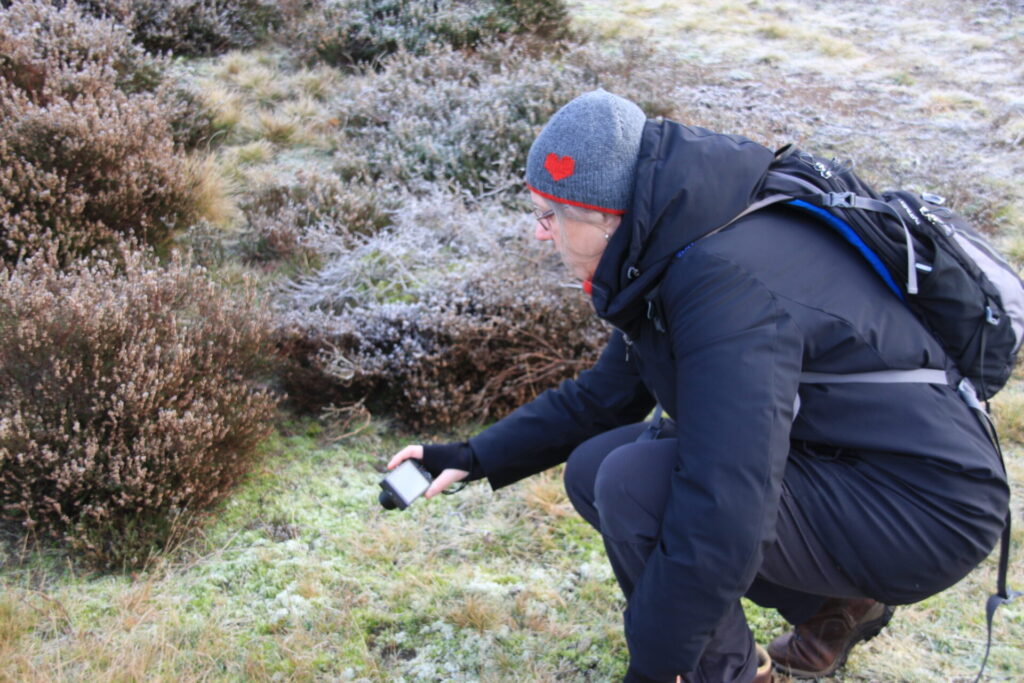
Hello! This has become rather a long and complicated blog post, I’m afraid. I hope you’ll forgive me. Why not make yourself a nice cup of tea or coffee before you dive in?
————————–
To focus or not to focus, that is the question I am asking myself this year. Would a little (or a lot) more focus be a good thing in my knitting/life? (And if so, how?) Or would it suck the joy out of it?
I don’t think anyone would call me scatterbrained, but I often feel drawn in many directions and (except in my job) have a hard time deciding what to do first, last, or not at all. Never being bored and always having many projects on the go can be fun, but it can also lead to overwhelm, fatigue and UFOs – UnFinished (knitting) Objects.
I know I’m not the only one with difficulty focusing, so I thought I’d share some of my journey here, always focusing on knitting. To my mind, what goes for knitting goes for most things in life.
To find answers, I started as I often do – by reading a book.
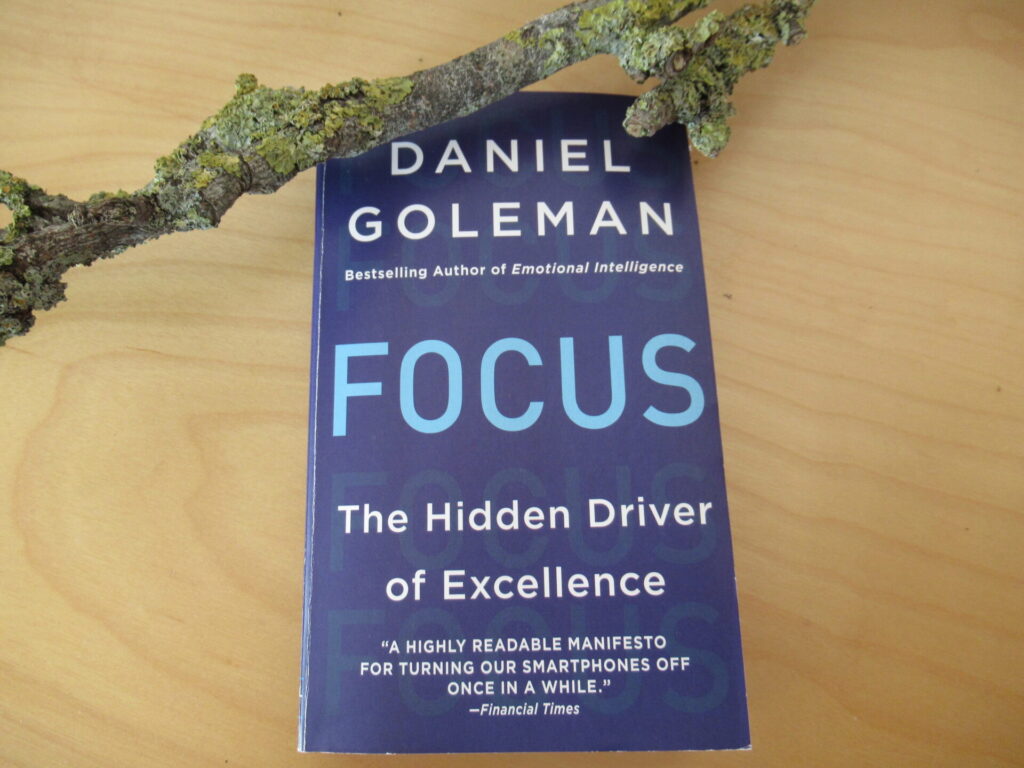
(Daniel Goleman, Focus: The Hidden Driver of Excellence, paperback edition New York: Harper, 2014)
I chose this book because, well, it’s Goleman. And also because one of the chapters bears the intriguing title ‘The Value of a Mind Adrift’.
So what can this book teach a knitter (or anybody else)?
Uhm… that’s not so easy to say. Ironically, I think it’s a rather unfocused essay, without even a definition of the word focus. Still, for me, 5 things jumped out.
1 – Anxiety is detrimental to focus
In fact all emotional turmoil disrupts focus, but Goleman specifically mentions the detrimental effects of anxiety in relation to focus and performance. Small wonder that people are having difficulty focusing on all kinds of things, and can’t even focus on their knitting, in this anxiety-inducing time we find ourselves in.
It also explains why there is still no progress on this project of mine.
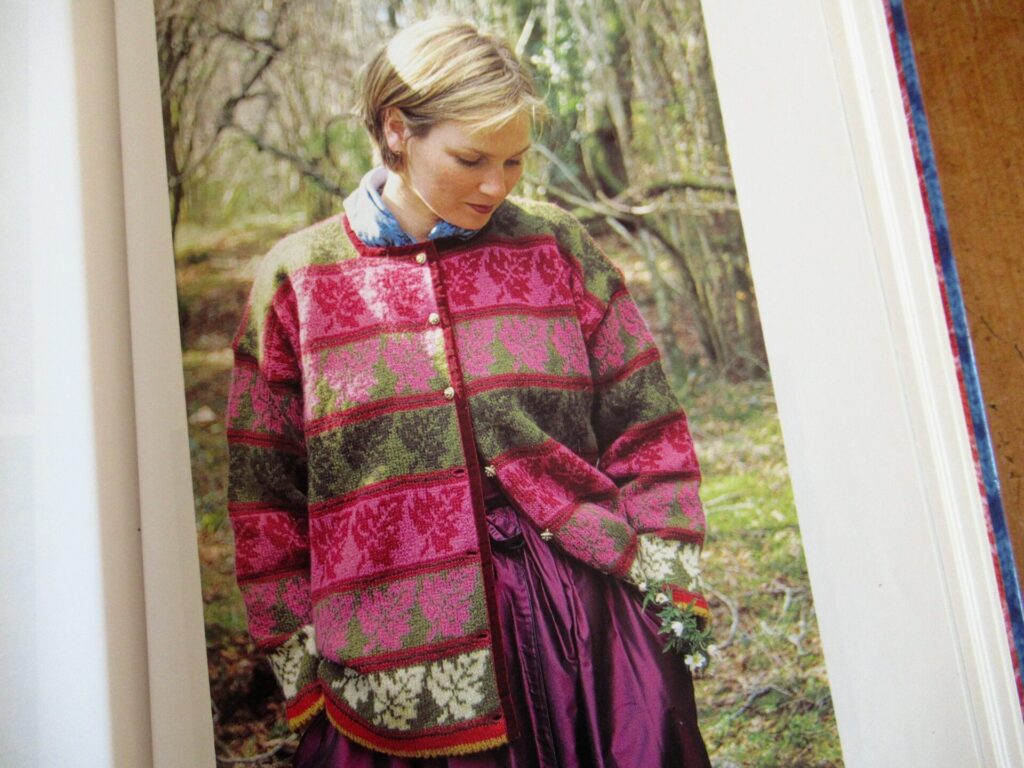
I still think it is beautiful and I still want to knit it, but I can’t seem to focus on it. In the past I would have set a deadline, made a plan and told myself to just get on with it. But I don’t want to force myself to focus in that way anymore. Least of all in my knitting.
Knowing that our inability to focus can be caused by anxiety, I think we need compassion. And also strategies for reducing such emotional turmoil.
2 – Different tasks use different parts of the brain
I have always felt that, say, knitting a simple sock takes a different kind of energy from knitting a complicated Fair Isle pattern, adapting a pattern for a better fit, or blocking a lace shawl. Goleman explains that it is not just about energy, but that different parts of the brain are involved in different tasks.
What he calls the ‘bottom-up’ brain takes care of more automatic and intuitive tasks. In knitting terms this would be knitting long stretches of stocking stitch, or simple socks (at least for an experienced knitter). The ‘top-down’ part of the brain is needed for tasks that take active cognitive effort, like Fair Isle, learning new techniques, doing maths or finishing a knit. ‘Top-down’ tasks also take more energy.
Let’s take my knitting as an example. I’m currently working on a reconstruction of my inherited knitting sampler.
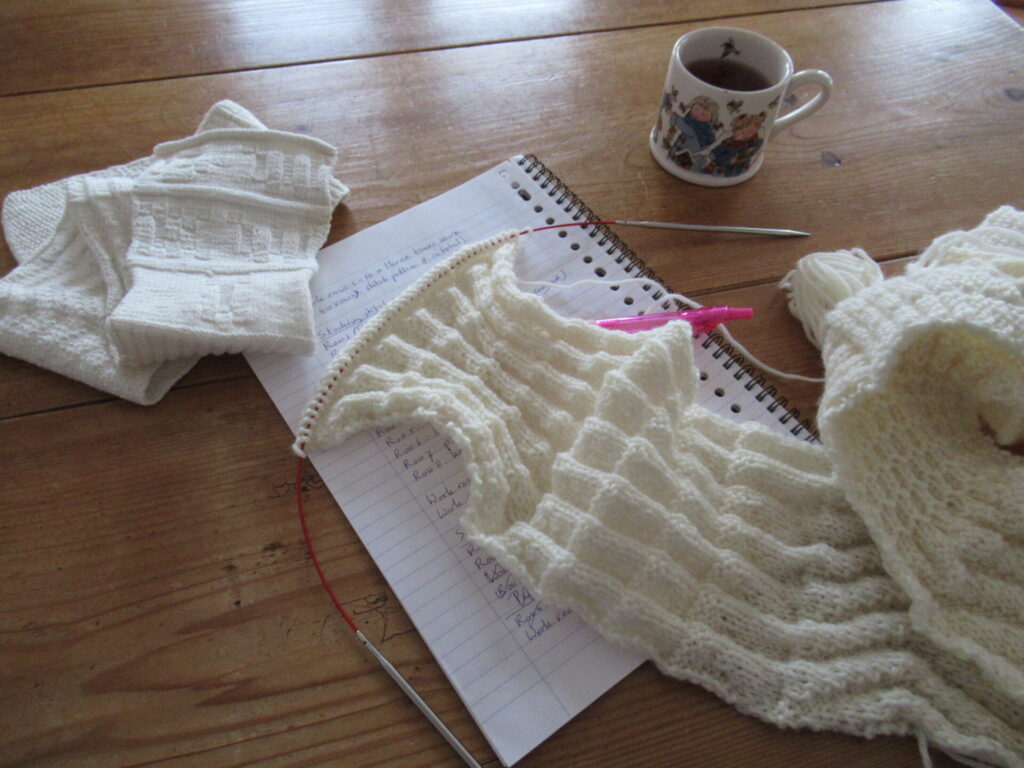
Figuring out each stitch pattern is a job for the ‘top-down’ part of the brain. But once I’ve worked it out, the ‘bottom-up’ part can take over.
And knitting the long stretches of my Panel Debate cardigan was pure ‘bottom-up’ knitting. But now that I’ve adapted the armholes for a better fit and am at a loss how to adapt the sleeve cap, the ‘top-down’ part of the brain needs to come to the rescue.
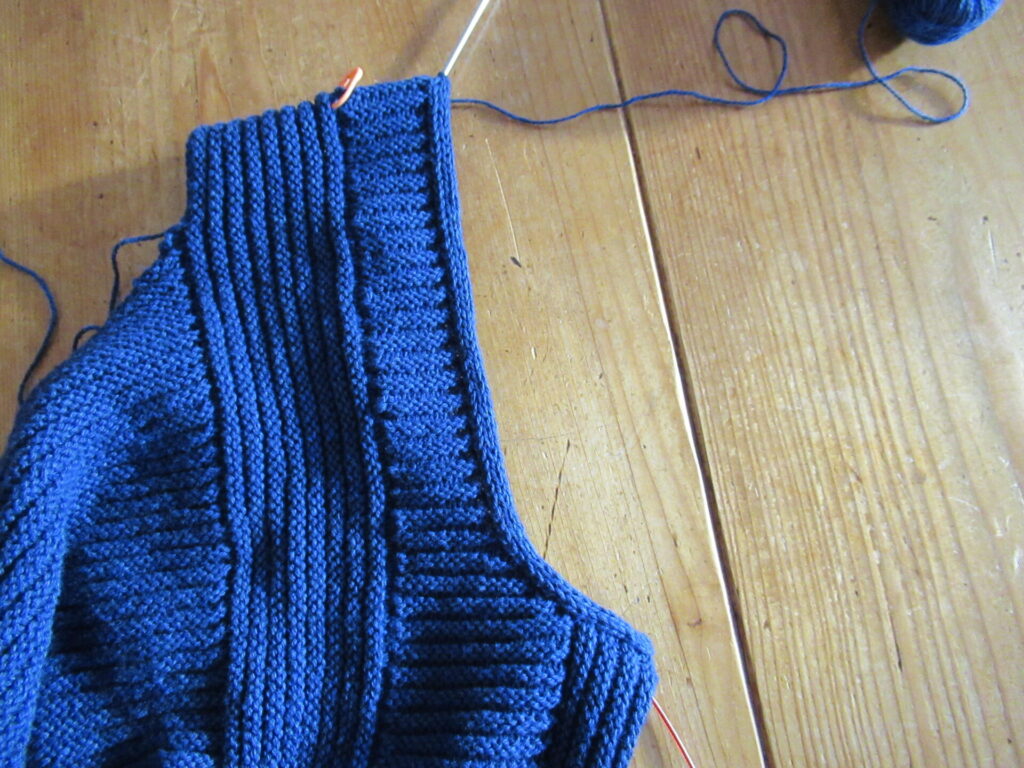
Most of my knitting time is in the evenings. The top-down part of my brain is often depleted in the evenings. Ergo, to prevent this cardigan from ending up as a UFO I need to solve that puzzle at a different time of the day, when my ‘top-down’ circuits can deliver the right kind of focus.
3 – Knitting can help us focus
Goleman explains that tight focus leads to fatigue of the top-down part of the brain, ‘much like an overworked muscle…’ (p. 56) And just like an overworked muscle, that part of the brain needs rest to recover. But how?
According to research by the University of Michigan, spending time in nature is one of the best ways to do that.
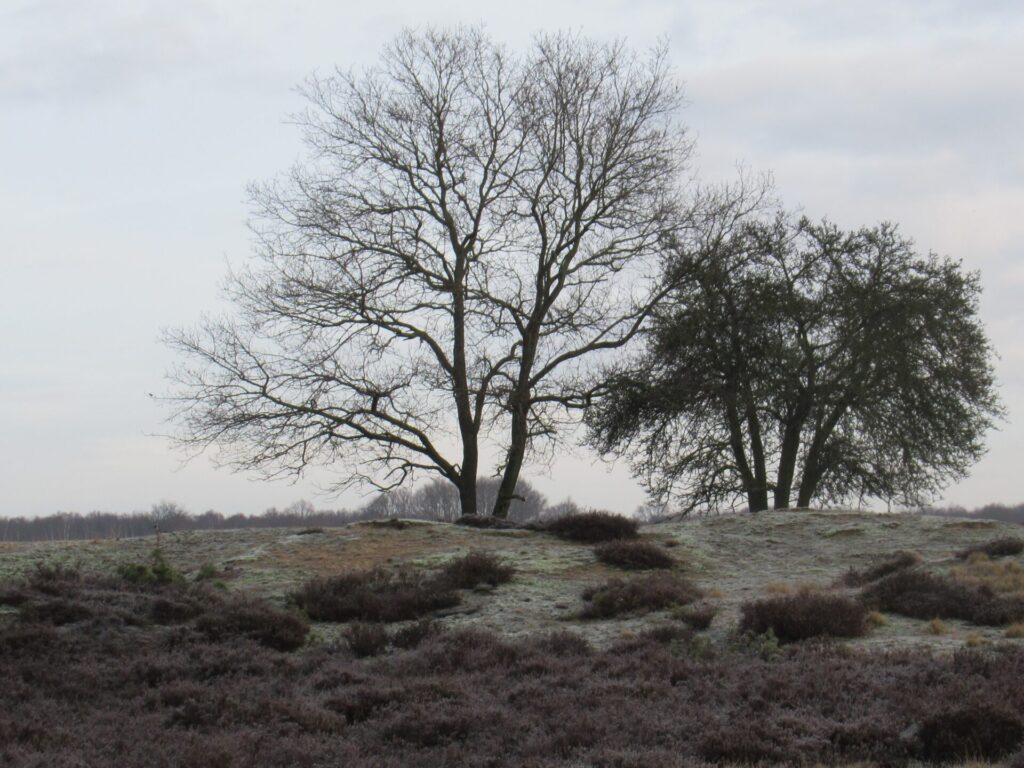
But according to Goleman, an even better way is ‘full focus on something relaxing’. What better way to recharge our ability to focus than some simple knitting?
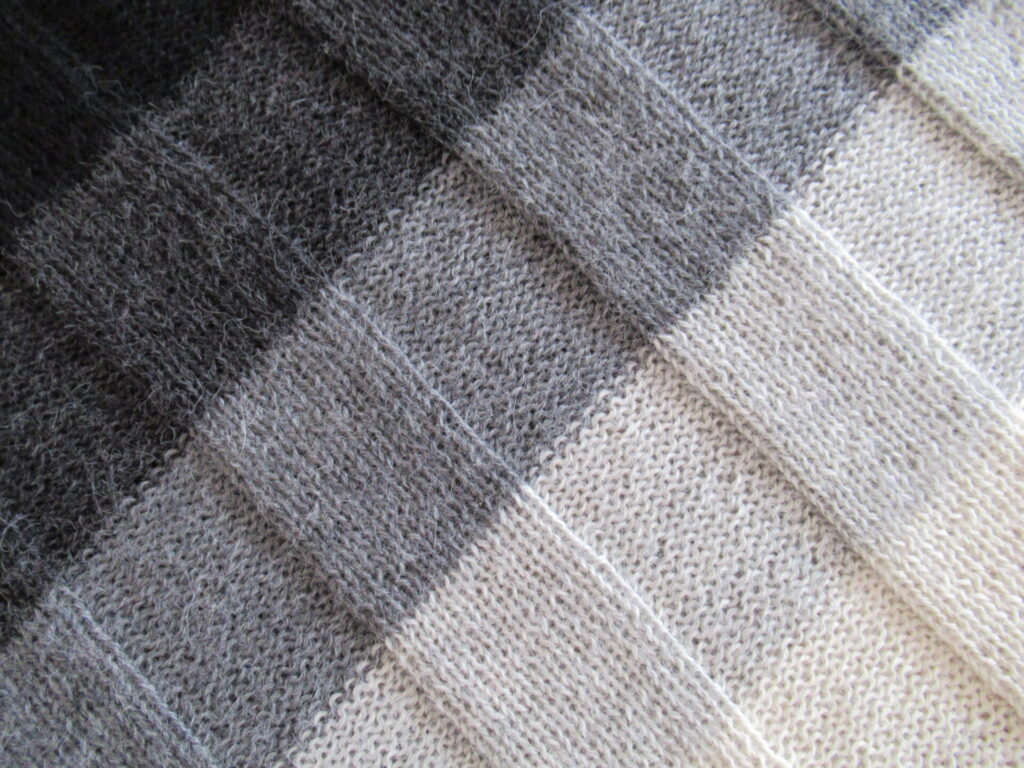
4 – Creativity needs unfocused time
I was so glad to read that goal-driven focus is not the be-all and end-all. For creativity it is absolutely necessary to let our minds drift. According to Goleman, we do need a goal, but once we have that, it is crucial to have ‘protected time – enough to really think freely. A creative cocoon.’ (p. 46)
For me, being in this ‘creative cocoon’ is one of the best things in life. But I find it very hard to take the time for it. That is something to look into.
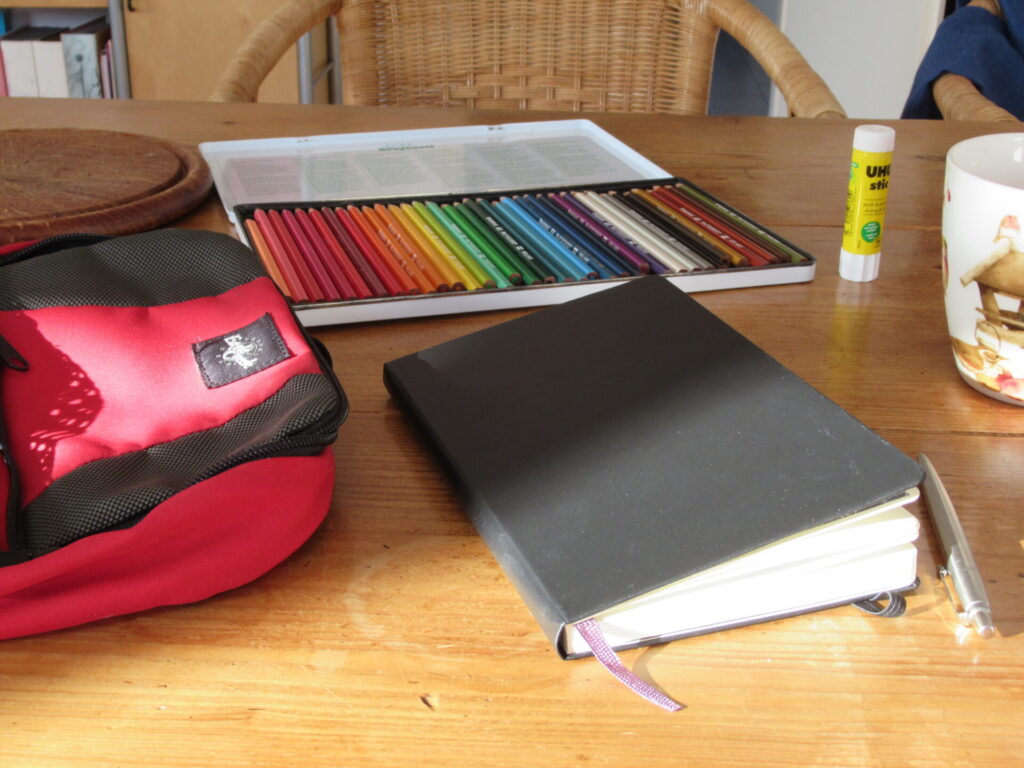
5 – We need positive AND negative focus
Most of the news we read and watch has a negative focus. Some people say that we should purely focus on positives. Just focusing on positives is certainly very tempting, but somehow it doesn’t feel right.
Goleman has something to say about that, too. Or rather, he quotes someone who has something interesting to say about that – psychologist and researcher Richard Boyatzis. ‘“You need the negative focus to survive, but a positive one to thrive”, says Boyatzis, “You need both, but in the right ratio.”’ (p. 172 ) Turns out every negative needs 2.9 positives for the right balance.
Looking at my current sock knitting, I tend to agree. Starting on the foot of the second sock, I noticed that there was something wrong with the yarn. At first I focused on the positives (‘the colours are still sort of similar’), but…
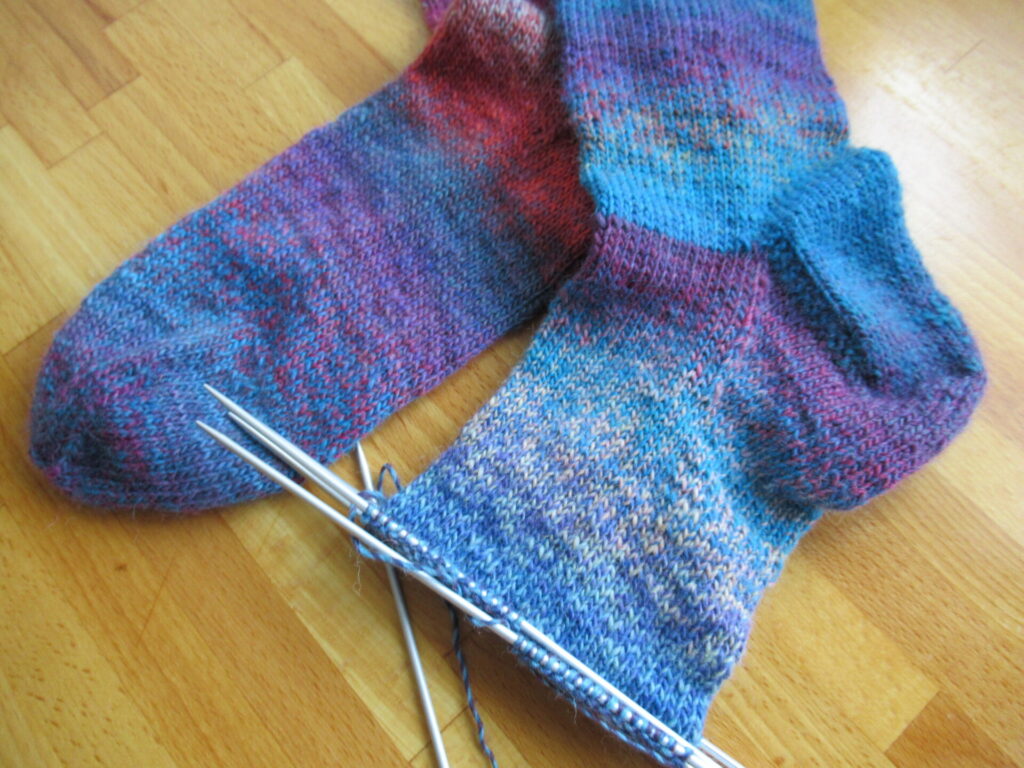
… after a while I could no longer ignore the negatives. The colours really were very different from the first sock. And it was not just the colours – there were also irregularities in the yarn, and later on a knot followed by a complete break in the colour sequence.

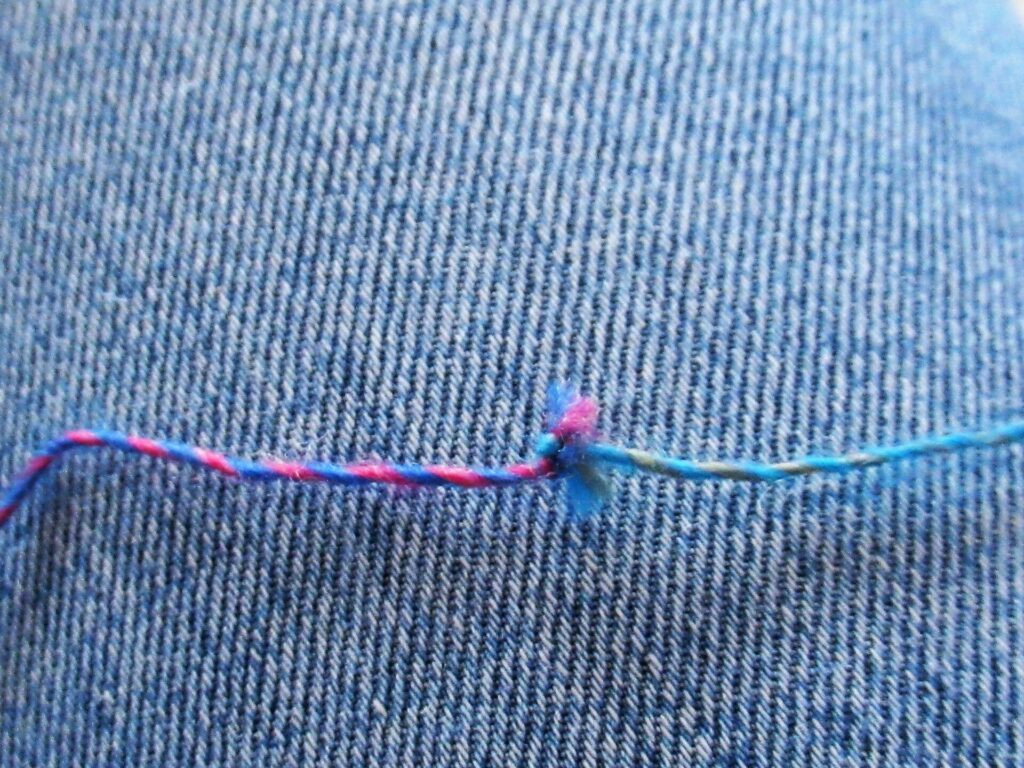
So, I sighed a deep sigh and rrrrrrrip, there it went. All the way back to just before the heel.
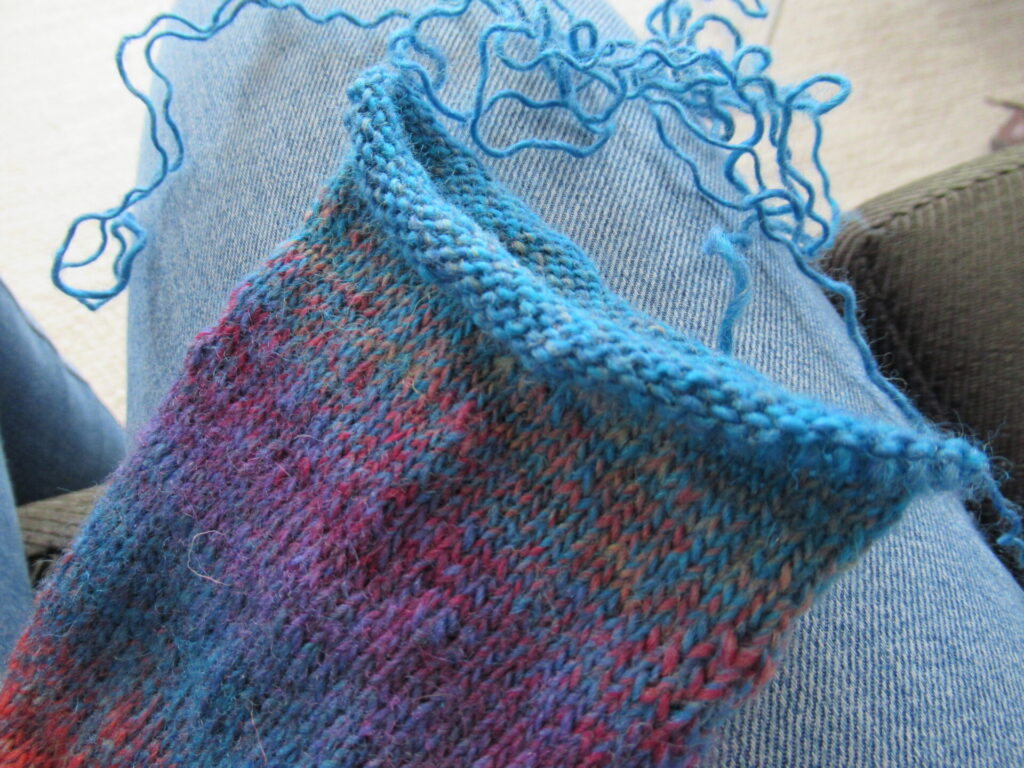
That was a bit of a negative experience. But I’m glad I didn’t bury my head in the sand. All in all, with 1 part negative focus and 2.9 parts positive focus, I got a well-balanced pair of socks. Knitting as a metaphor for life. 😉
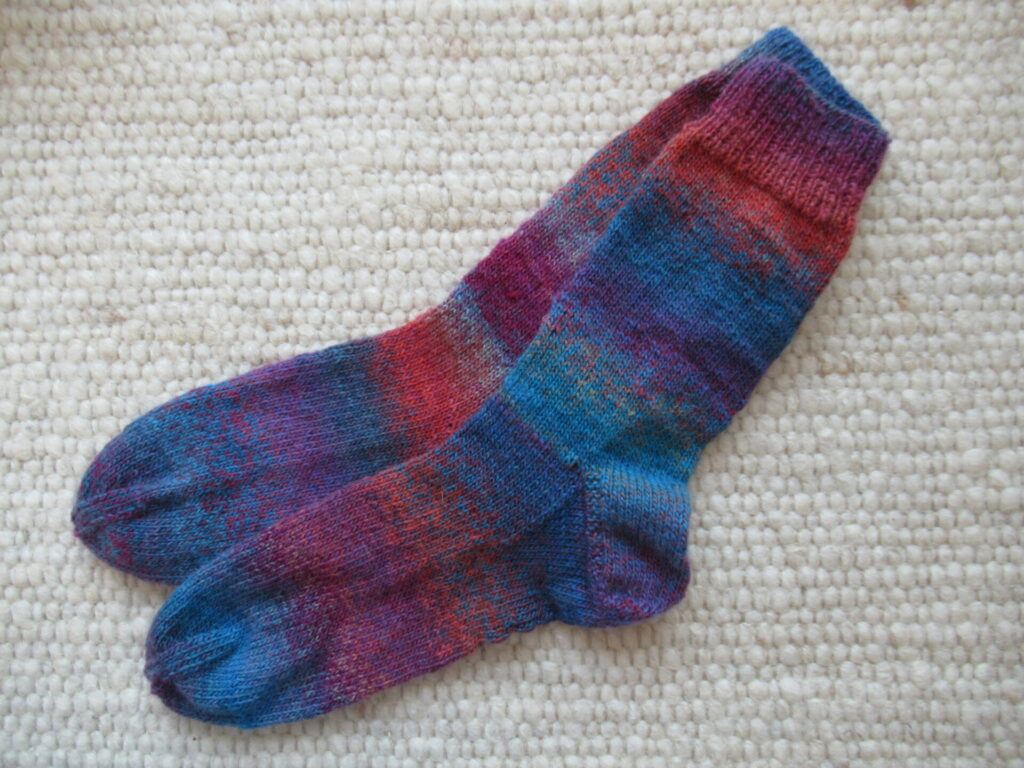
This book wasn’t an easy read. I struggled with all the talk about ‘leaders’ (mostly CEOs of big tech companies), as if we should all emulate them. Somewhere Goleman says that we are, in a sense, all leaders, but imho most of us do not lead anything but our own lives.
Having said that, it did give me food for thought. And applying some of the ideas to humbler and more personal pursuits has made reading it worthwhile.
Golemans book was a good start, but it doesn’t give us any ‘How-Tos’. I’m left with questions like: How to decide what to focus on? How to find focus when you’re procrastinating? How to stay focused until something is finished? And how about people with multiple interests or roles in life? I think I need another book for those.
Take care! Xxx
PS. In case you are wondering what my camera was focusing on in the picture at the top and during the rest of the walk – it was frozen moss:

Interesting read! Just these last weeks I’ve been wondering what will give me a positive drive in these challenging times and I decided I needed some outside stimulation as well, so I decided to resume Norwegian lessons and tonight I will have my first group lesson online. I look forward to the assignments with weekly deadlines I must say.
In the past I was very focus and deadline driven in my knitting until a few years ago my boyfriend said, it’s your hobby, right? Who cares if you have 7 UFO’s? Just cast on something new when you feel like it! And that has been liberating – I take knitting very seriously, but not too an extend that it feels like work.
For 2021 I decided to make a goal list, but a short one with enough time to start spontaneous projects as well. I want to knit a Marius sweater for myself, a hap shawl, a striped sweater, a light colored lace shawl and… I want to finally knit the Bohus kit I bought 5 years ago in Sweden. Maybe I will knit all of these, maybe not?
I found the last few months that for me online testknits and knitalongs are a nice way to have focus and connect with others. Just last night I signed up for the Japanese Sampler Scarf 2021 (a true top down brain project that I will also alter to make it wider, but I have a boring stockinette body to knit as well).
Really interesting to read about all your knitting plans. A lovely list! I’ll be following your progress on Ravelry. And your Norwegian lessons sound great, too. There is a lot of food for thought in your comment – about the positive drive of starting something new, group knitting activities, and your boyfriend’s remark. Thank you!
Who are you learning Norwegian with? The group lesson sounds good.
I’ve been ‘learning’ Swedish for 25 years and haven’t gotten very far. I love the language but have realised it’s not the speaking of it that is so important but the understanding what the native speaker is saying to you. Sounds obvious!
@Janice Evans, I’m taking classes with a local institute for Scandinavian languages. This is my seventh class so far and I can relate to your troubles with understanding. Norwegian is notoriously difficult to understand because of all the dialects! I try to watch Norwegian television, but my partner doesn’t care much for watching tv with subtitles.
Interesting read, and well timed for this fractured focus reader. Sometimes my ideas are like rabbit holes I fall into and lose track of. Sometimes the ideas won’t go away! At any rate the tug between being “in or out” of focus is very familiar to me. Thanks for the post!
It’s always good to hear that I’m not the only one struggling with something. Rabbit holes can be so hard to avoid and tricky to get out of.
That explains why I only completed 5 small projects last year and frogged all my sweaters. It was a knitting nightmare!
Really sorry to hear about your knitting frustrations. I always feel that understanding why something is happening helps. It makes it easier to forgive yourself and start looking for solutions. Hope this year will be better!
Thank you for this! It’s why I’m still working on my second Christmas sock! Likely it’s the same reason my knitter friend has found it best to knit hats now instead of sweaters! Thank you, it’s good to know I’m not the only one ! CM Rav group MelKnitsInOly
Looked at from the positive side, there is a good chance that your second Christmas sock will be finished before Christmas (2021). No, but seriously, I’m hearing this more and more now, and this lack of focus can be bothersome. It really bothers me, and I’m looking for ways to deal with it.